
Paul Howard Manship was an American sculptor. He consistently created mythological pieces in a classical style, and was a major force in the Art Deco movement. He is well known for his large public commissions, including the iconic Prometheus in Rockefeller Center and the Celestial Sphere Woodrow Wilson Memorial in Geneva, Switzerland. He is also credited for designing the modern rendition of New York City's official seal.
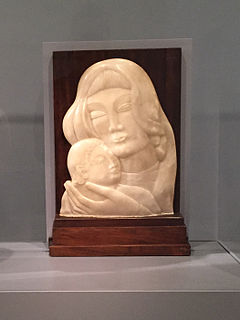
Robert Laurent was a French-American modernist figurative sculptor, printmaker and teacher. His work, the New York Times wrote,"figured in the development of an American sculptural art that balanced nature and abstraction." Widely exhibited, he took part in the Whitney's 1946 exhibition Pioneers of Modern Art. Credited as the first American sculptor to adopt a "direct carving" sculpting style that was bolder and more abstract than the then traditional fine arts practice, which relied on models, Laurent's approach was inspired by the African carving and European avant-garde art he admired, while also echoing folk styles found both in the U.S. and among medieval stone cutters of his native Brittany. Best known for his virtuoso mastery of the figure, Laurent sculpted in multiple media, including wood, alabaster, bronze, marble and aluminum. His expertise earned him major commissions for public sculpture, most famously for the Goose Girl for New York City's Radio City Music Hall, as well as for Spanning the Continent for Philadelphia's Fairmount Park. After the Depression, he was also the recipient of several Works Progress Administration (WPA) Federal Art Project commissions under the New Deal, including a bas-relief called Shipping for the exterior of Washington, D.C.'s Federal Trade Commission Building, commissioned by the Treasury Department’s Section of Fine Arts in 1938.
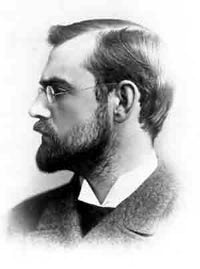
Archer Milton Huntington was a philanthropist and scholar, primarily known for his contributions to the field of Hispanic Studies. He founded The Hispanic Society of America in New York City, and made numerous contributions to the American Geographical Society.

Milton Horn was a Russian American sculptor and artist known for work that, according to a 1957 citation of honor from the American Institute of Architects, demonstrated "the truth that architecture and sculpture are not two separate arts but, in the hands of sympathetic collaborators, one and the same".
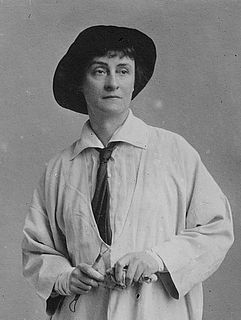
Janet Scudder, born Netta Deweze Frazee Scudder, was an American sculptor and painter from Terre Haute, Indiana, who is best known for her memorial sculptures, bas-relief portraiture, and portrait medallions, as well as her garden sculptures and fountains. Her first major commission was the design for the seal of the New York Bar Association around 1896. Scudder's Frog Fountain (1901) led to the series of sculptures and fountains for which she is best known. Later commissions included a Congressional Gold Medal honoring Domício da Gama and a commemorative medal for Indiana's centennial in 1916. Scudder also displayed her work at numerous national and international exhibitions in the United States and in Europe from the late 1890s to the late 1930s. Scudder's autobiography, Modeling My Life, was published in 1925.

Anna Vaughn Hyatt Huntington was an American sculptor who was among New York City's most prominent sculptors in the early 20th century. At a time when very few women were successful artists, she had a thriving career. Hyatt Huntington exhibited often, traveled widely, received critical acclaim at home and abroad, and won multiple awards and commissions.
Donald Harcourt De Lue was an American sculptor, best known for his public monuments.
Albert W. Wein (1915-1991) was an American sculptor.
Oronzio Maldarelli was an American sculptor and painter (1892–1963) born in Naples, Italy.

Albert Paley is an American modernist metal sculptor. Initially starting out as a jeweler, Paley has become one of the most distinguished and influential metalsmiths in the world. Within each of his works, three foundational elements stay true: the natural environment, the built environment, and the human presence. Paley is the first metal sculptor to have received the Lifetime Achievement Award from the American Institute of Architects. He lives and works in Rochester, New York with his wife, Frances.

Brenda Putnam was an American sculptor, teacher and author.

Edith Woodman Burroughs was an American sculptor. Her work was included in the 1913 Armory Show.
The George D. Widener Memorial Gold Medal was a prestigious sculpture prize awarded by the Pennsylvania Academy of the Fine Arts from 1913 to 1968. Established in 1912, it recognized the "most meritorious work of Sculpture modeled by an American citizen and shown in the Annual Exhibition." PAFA's annual exhibitions were open to all American sculptors, but an individual could be awarded the medal only once. Sculptors Paul Manship, Albin Polasek, Malvina Hoffman, Carl Paul Jennewein, Anna Hyatt Huntington, William Zorach and Leonard Baskin were among its recipients.
Gaetano Cecere, American sculptor. He was born, educated and worked in New York City. He studied with Hermon A MacNeil, with work in the Museum of Modern Art in New York City, and Gaetano, known as "Guy," attended the Beaux-Arts Institute of Design and the National Academy of Design. In 1920 he won the Prix de Rome and studied at the American Academy in Rome for several years. During this period a "tendency to simplify forms for decorative effects was developed." Cecere has works and documents housed in many major museums and collections, including the Smithsonian Institution, the "National Collection of Fine Arts" and the Archives of American Art".

Mario Joseph Korbel was a Czech-American sculptor.

Vincent Glinsky was an American sculptor. He is especially noted for his architectural decorations.

Granville Wellington Carter NA, Fellow National Sculpture Society was an American sculptor.
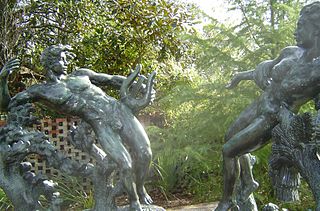
Nathaniel Choate (1899-1965) was an American painter and sculptor who served as vice president of the National Sculpture Society. Choate worked with varied materials, including aluminum, bronze, marble, and onyx. He regularly showcased his work at the National Academy of Design in New York City and the Pennsylvania Academy of the Fine Arts in Philadelphia, Pennsylvania. The National Academy of Design elected him an affiliated academician in 1955. In 1961, the Society of Medalists issued their 64th medallion in his honor. Choate also possessed the National Advertising Award from the Outdoor Advertising Association of America.
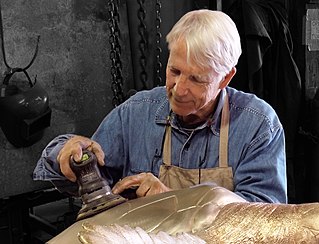
William André Harvey was an American sculptor whose realistic and contemporary works are primarily cast in bronze using the lost wax method. Harvey also worked in granite, collage, painting, and produced intricate sculptural jewelry cast in gold. He worked in the Brandywine Valley, in Rockland near Wilmington, Delaware.
Sigmund Abeles is an American figurative artist and art educator. His work embodies the "expressive and psychological aspects of the human figure; an art focused on the life cycle." He taught art for 27 years at various institutions including Swain School of Design, Wellesley College, Boston University, the National Academy, and the Art Students League of New York. Currently Professor Emeritus at the University of New Hampshire, Abeles works full-time in his NYC and upstate NY studios. He is the recipient of numerous grants and awards for printmaking, drawing, painting, and sculpture, including Pastel Society of America Hall of Fame honoree in 2004 and most recently the Artists' Fellowship 2017 Benjamin West Clinedinst Medal. His work can be found in many public institutions including the Museum of Fine Arts, Boston, Art Institute of Chicago, Metropolitan Museum of Art, Philadelphia Museum of Art, and the Whitney Museum of American Art. Abeles was one of three artists featured in Manfred Kirchheimer's 2012 feature-length independent film Art Is... The Permanent Revolution, on the history of the art of protest in prints.
















